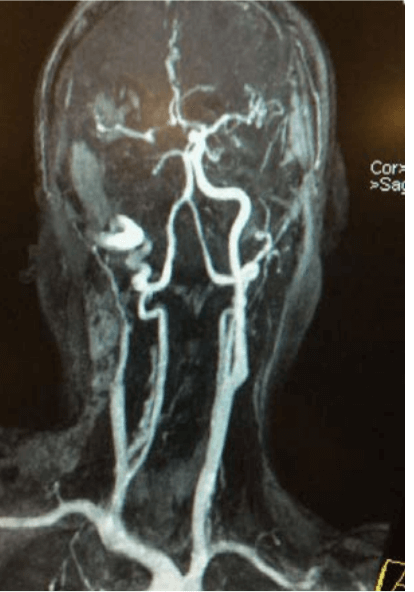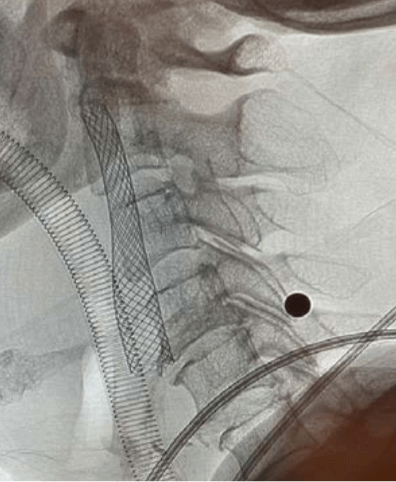
Stroke is the third and fourth death high rate in Hong Kong and probably in Chinese society, the death rate is secondary of cancer, heart disease and infectious diseases. However, among survivors of many serious illnesses, stroke is the number one cause of permanent disability. The last two articles was talking about stroke prevention in cerebrovascular surgery, and this article is about what is stroke first aid.
Detailed physical examination is the key to identify potential stroke factors.
In recent years, stroke patients are mostly young and healthy people, more on active middle-aged people, they think that their body is not genetically related to any disease, as long as they have more exercise, healthy diet habit, sleep well, do not smoke or drink, they thought they can be 100 percent sure not to have stroke, but they are actually missing the key point to prevent stroke. As I described in the first two articles (cerebrovascular surgery part I and II ), detailed and objective physical examinations, such as three-dimensional imaging of blood vessels in the neck and brain, are the most effective way to screen the body for a hidden stroke.
Stroke can really shock patients and their families without warning. In recent years, stroke has become happening in young people, and patients with congenital cerebrovascular lesions and strokes can be as low as four to ten years of age; Patients with acquired brain or cervical vascular lesions who have strokes can be as young as 28 or 29 years old. In addition, patients who have stroked as a consequence from exercise, neck massage and spinal cord injury are happening in people of 20s and 50s.
Three factors to concern when stroke occur
Time of the day when stroke occur:
When strokes occur during the day time, like nine to five during office hours, compared to strokes that occur at midnight 3 or 4 a.m. during sleep, can be a big difference in the first aid procedure.
Where is the stroke patient when occur:
Where the patient is when stroke attack, there is no special treatment of acute stroke medical professionals and equipment, cannot be rescued in the golden hour, the patient’s survival rate and rehabilitation period have a great impact.
Who is around the stroke patient when occur:
When stroke occurs, the stroke patient’s relatives or friends and first-hand rescue doctors are the most critical and key person. The task of relatives and friends is to use the fastest and most direct method of seeking help, sending patients to hospitals with 24-hour MRI and CT imaging services, as well as specialist cerebrovascular surgeons. Doctors who rescue patients in first-hand, if they have training in cerebrovascular surgery, can directly diagnose, divert and treat the patient’s condition in their prime time, without having to refer other specialists and delay the rescue. The following cases are shared to help us understand the importance of time, place and people.
Case sharing
Mr. Lo, 50 yrs old, used to live a healthy life and had no habit of smoking or drinking. Six years ago, after a nap, he suddenly felt weakness in his left hand and foot because of a fever, so his sister take him to a government hospital near his home. CT scans showed no bleeding on Mr. Lo’s brain, but could not show whether there was a blockage in the neck or cerebrovascular arteries, and in fact the CT scan is very limited in diagnosing ischemic strokes, which could not detect early ischemia in the patient’s brain as quickly as MRI. In addition, CT scans without injections of contrast agents were not able to detect blockages in blood vessels in the neck or brain of patients. At that time, MRI service was not a necessary procedure for stroke first aid in government hospitals, and there was no 24-hour MRI scanning in the government hospitals. Even so, the non-specialists on duty estimated that Mr Lo was suffering an ischemic stroke caused by a neck or cerebrovascular embolism and required emergency vascular first aid. But the traditional 3 to 4.5 hour time is very limited for intravenous thrombosis, because there need to be certain procedure in waiting for an emergency department diversion, waiting for a CT scanning, a preliminary consultation in the hospital, and so on. Mr Lou’s stroke was caused by a blockage of large blood vessels in his neck and brain, which is not reversed by a normal intravenous thrombosis drug. The first aid at that condition really needed was the new cerebrovascular surgery at that time: mechanical thrombosis to absorb internal vascular treatment. But the public hospital did not have such emergency surgery to do, Mr. Lo’s sister had to seek help from a private specialist.
Mr. Lo’s being taken to a private hospital, an emergency MRI was done right away, which showed that the blood vessel in his right neck and brain was blocked by blood clots, ischemic edema in his right brain, which led to coma and weakness in his left hand and foot. Urgent Cerebrovascular surgery for the patient is needed, the doctor with a thin hair catheter through the patient’s right thigh groin to the main artery, catheter through the abdomen and chest cavity of the main artery all the way up, to the patient’s right neck and brain vessel, mechanical thrombosis absorption of internal vascular treatment was done. After an hour of vascular surgery, all blood clots were removed, blood vessels in the right neck and brain were successfully opened, and the symptoms of ischemic brain were immediately improved. After awake under general anaesthetic, Mr. Lo’s brain awareness and ability to move hands and feet slowly improved, and he was taken to another public hospital for further rehabilitation. For six years, Mr. Lo has been able to continue working and enjoy life with his family, except for a mild hand weakness. Mr Lo’s stroke treatment was six years ago, and in these years the emergency care for stroke in public hospitals has gradually improved to provide better services to patients.

MRA show there is blockage in the neck and brain vessel

The stent were inserted into the arteries to prevent future blockage

 Book an Appointment
Book an Appointment


